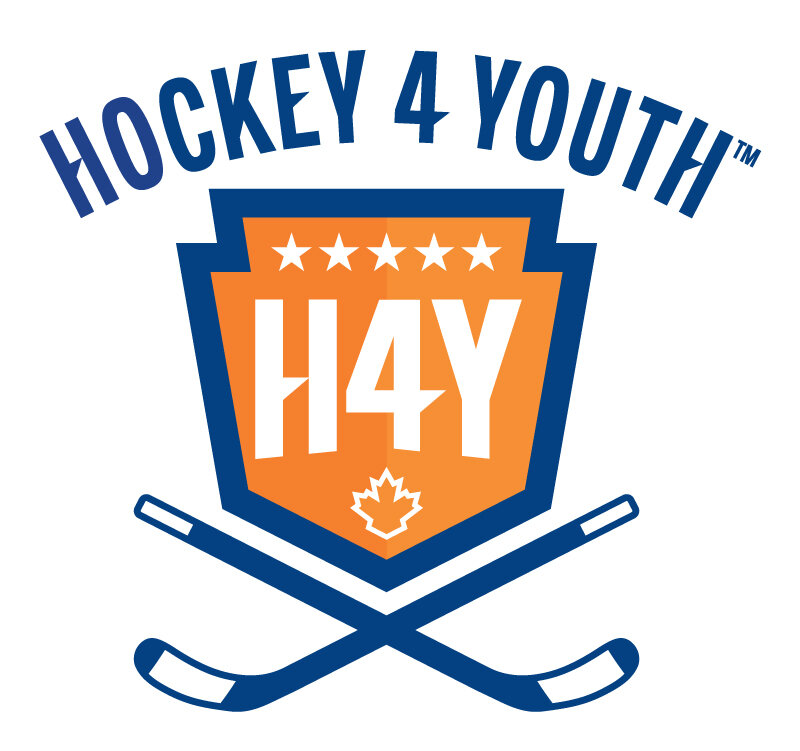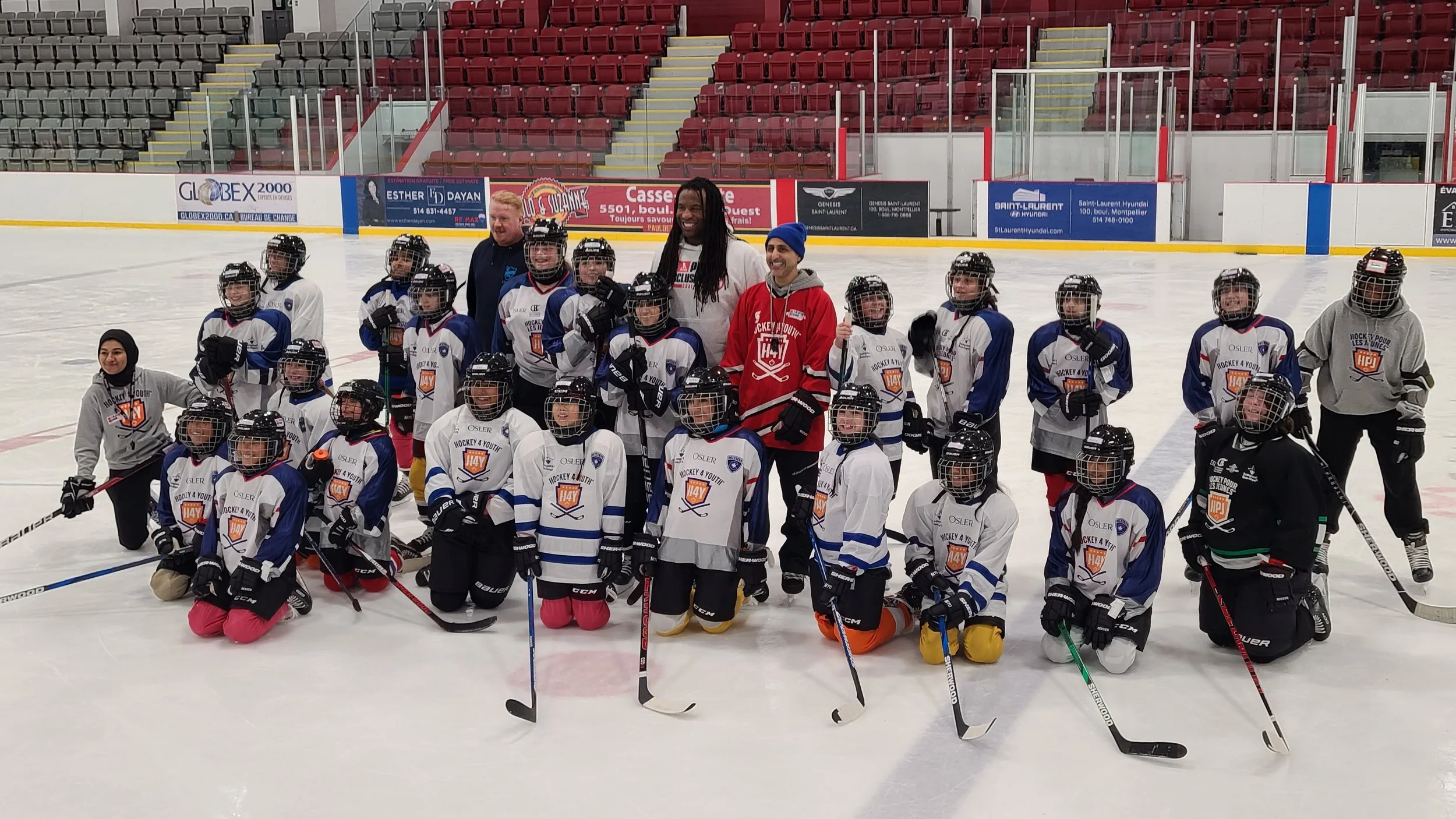“My parents came to Canada in 1972 from Uganda. They were refugees who didn't have much. They struggled to make a living and didn't have the money to put me into hockey. I was born in Vancouver and was given my first set of hockey equipment by our neighbor, who still lives across the street from my mom. They told my parents, “you should put your youngest son into hockey,” and my parents obliged. It gave me an opportunity to feel socially included.
I remember getting that equipment and trying it on as a six-year-old. That small gesture really turned into what it is that I do nowadays which, through the Hockey 4 Youth Foundation, is to foster social inclusion for newcomer and high-priority teens. I always told my mom and my dad that it's been kind of a full-circle experience. They put me into hockey and now I'm using the game to give back.
Clockwise from top left: the Hasham family; Moe and his wife, Monika, with his father in 2019; Moe poses with (l to r) Nigel Dawes, Willie O’Ree and Jarome Iginla.
Hockey is very expensive. It costs almost four thousand dollars a year to get an 11 to 17-year-old into the game and if you're a newcomer to the country or you're living in a low-income situation, that's just out of reach. So we removed that barrier by providing a free hockey program and experiential learning off the ice.
We know that, as teenagers, they’re already on the back foot and they have a number of barriers to fostering inclusion. They’re facing challenges with fitting in. They’re facing challenges with making friends. They’re facing challenges with English literacy. So, the idea is let’s bring them into a sport. Minor hockey is unfortunately not set up to welcome (teenagers) who have never skated before. What we’ve tried to build is something that is inclusive, safe, and removes barriers, but also to get them into the game that we love.
We do have some kids who are first-generation Canadians, girls and boys. They come from low-income neighbourhoods, and they’re first-generation and in some cases second-generation, but the circumstances have not allowed them to play the game. Our focus is on newcomers, but it doesn’t always work that way. If that kid has never been able to afford a chance to play the game and they’re in high school, then I’m not going to turn them away.
Stepping onto the ice is stepping into life for these kids. I love teaching them how to fall and get back up. It’s by far my favourite thing because I know when they get up, they’re like, “Oh, I can do this.” It means to me that they understand the life lesson behind the sport, which is when you fall, you get back up. You try, and you keep pushing. Those cliches that we hear? “You only have one life to live.” It’s true. You’ve got to take those risks.
I think these kids have changed me. I think about the challenging situations that they've come from. Some of them have come from war-torn countries and every day that they're out on the ice, every day they come back to practice, every day they get back up, every day they go to school and improve their English, that perseverance is what drives me to continue to work with with more newcomer and high priority teens. No matter what they're not giving up.
My happiest time is being on the ice with these kids. It gives me so much joy to be out there just skating around and feeling young and, at the same time, seeing the smiles when a kid takes that first step on the ice. I remember what that was like for me.”
Moe (red jersey) next to former NHLer Georges Laraque with girls from the Saint-Laurent Diverse Girls Program in Montreal (February 2023)



